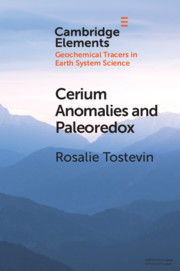Element contents
Cerium Anomalies and Paleoredox
Published online by Cambridge University Press: 02 January 2021
Summary
- Type
- Element
- Information
- Online ISBN: 9781108847223Publisher: Cambridge University PressPrint publication: 25 February 2021
References
- 14
- Cited by



